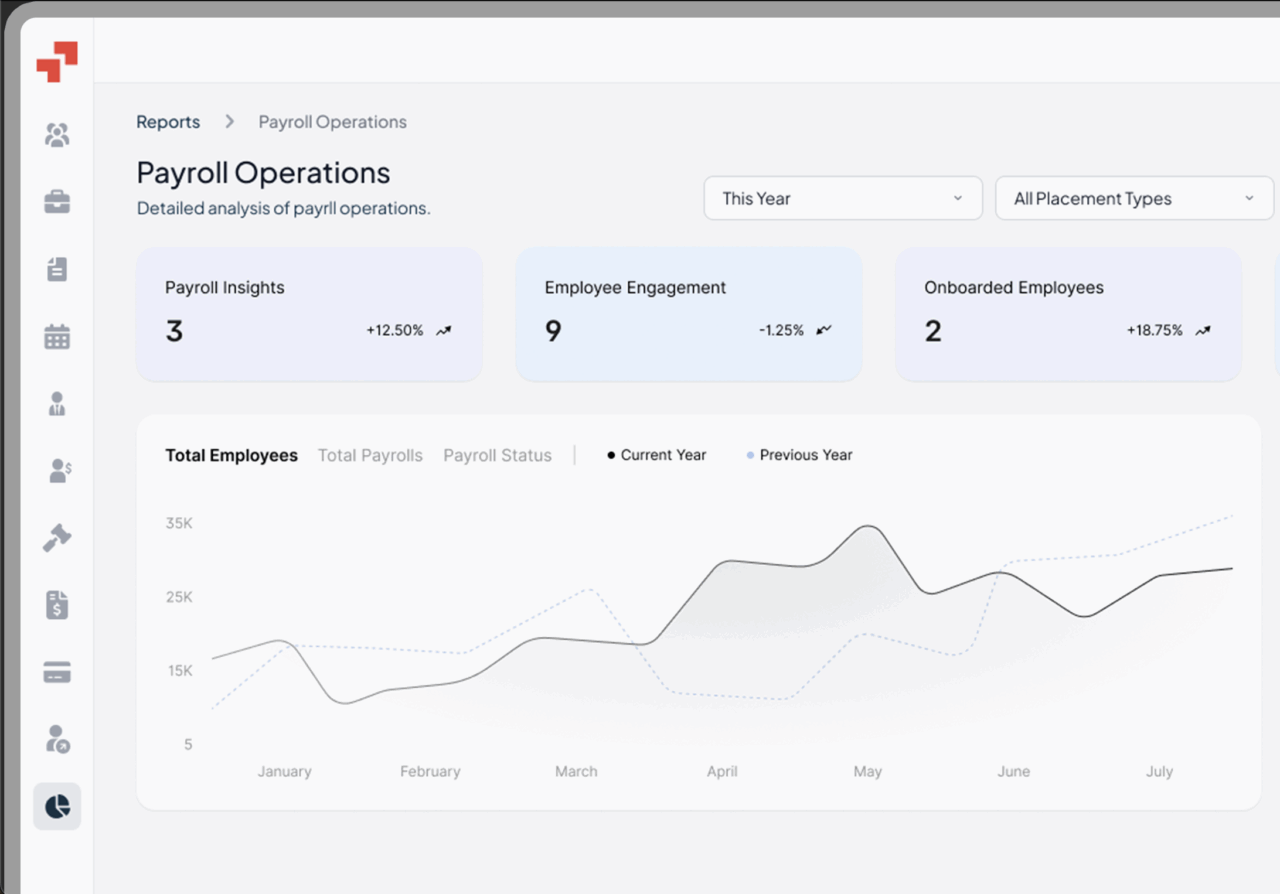Global Workforce GlossaryPre-Tax Deductions
Related Terms
Floating Holiday
Tax Identification Number
W2 Employee
Holiday Pay
Form I-9
Pre-tax deductions are amounts subtracted from an employee’s gross income before calculating taxes.
These deductions reduce taxable income, potentially lowering the overall tax liability. Common examples include contributions to retirement plans, health insurance premiums, and transportation benefits. Employers in the U.S., UK, and EU often offer pre-tax deductions to enhance employee benefits while optimizing tax outcomes.
Table of Contents
- What are Pre-Tax Deductions and Contributions?
- Pre-Tax Deductions vs. Payroll Deductions
- How to Claim Pre-Tax Deductions
- Types of Pre-Tax Deductions
- How to Calculate Pre-Tax Deductions
- Benefits of Pre-Tax Deductions
- How Do Pre-Tax Deductions Impact Taxes?
- Compliance Considerations for Employers
- Examples of Pre-Tax Deductions
- Practical Example: U.S. Tech Startup Scaling Globally
- FAQ’s
Pre-Tax Deductions vs. Payroll Deductions
Pre-Tax Deductions: Pre-tax deductions are a specific type of payroll deduction taken before taxes are calculated. Common examples include 401(k) contributions in the U.S., pension schemes in the UK, and health insurance premiums in the EU. These deductions reduce an employee’s taxable income, lowering federal, state, or national tax liabilities while still counting toward benefits or retirement contributions.
Payroll Deductions: Payroll deductions are any amounts withheld from an employee’s paycheck. These can include taxes, insurance premiums, retirement contributions, union fees, or wage garnishments. Payroll deductions can be categorized as mandatory deductions, such as taxes and wage garnishments, which are required by law or court order, and voluntary deductions, which employees choose, like retirement contributions or insurance premiums.
All pre-tax deductions are payroll deductions, but not all payroll deductions reduce taxable income. Pre-tax deductions save taxes immediately, whereas other payroll deductions do not.
How to Claim Pre-Tax Deductions
In the U.S., employees can claim pre-tax deductions by enrolling in employer-sponsored benefit plans, such as 401(k)s or health savings accounts (HSAs). Employers typically handle the deduction process through payroll systems. Efficient payroll processes and payroll processing are essential for accurate and timely deductions, helping to reduce administrative burden and ensure compliance.
In the UK, employees opt into schemes like salary sacrifice for pensions or childcare vouchers, which reduce their taxable income. Employers must ensure compliance with HMRC regulations when implementing such schemes.
Types of Pre-Tax Deductions
Retirement Contributions: Employees can contribute to 401(k) plans in the U.S. or pension schemes in the UK/EU before taxes are applied, reducing taxable income while building retirement savings.
Health Insurance Premiums: Premiums for employer-sponsored health, dental, or vision plans are deducted pre-tax, lowering taxable income and providing essential healthcare coverage. Group health insurance is a common pre-tax benefit, and many health plans including high-deductible health plans and health reimbursement arrangements (HRAs) offer employees the opportunity to save on taxes through pre-tax premium deductions.
Transportation Benefits: Costs for commuter programs, parking, or public transit passes can be deducted before taxes, helping employees save on commuting while reducing taxable income.
Flexible Spending Accounts (FSAs): Employees can set aside pre-tax funds for eligible medical or dependent care expenses, lowering taxable income and covering out-of-pocket costs. Note that eligibility for a Health Savings Account (HSA) requires enrollment in a high deductible health plan.
Life and Disability Insurance: Employer-provided life or disability insurance premiums can be deducted pre-tax, offering financial protection while reducing taxable income. Group term life insurance and group life insurance coverage are often included as part of employee benefits, with premiums for coverage up to a certain limit typically tax-free under IRS rules.
A comprehensive benefits package often includes these pre-tax options, enhancing employee compensation and providing valuable tax advantages.
How to Calculate Pre-Tax Deductions
To calculate pre-tax deductions, start with the employee’s gross pay and identify the deduction amount (percentage or fixed).
Use this formula:
Pre-Tax Deduction = Employee’s Gross Pay × Deduction Percentage
Example: An employee earning $5,000 monthly who contributes 5% to a 401(k) would have a pre-tax deduction of $250 ($5,000 × 5%). Subtracting this from the employee’s wages reduces the amount subject to tax: $5,000 – $250 = $4,750. Employers must apply these deductions before calculating federal, state, or local taxes in the US, PAYE in the UK, or income/social contributions in the EU to remain compliant.
Benefits of Pre-Tax Deductions
- Reduced Taxable Income: Lowers federal, state, or local taxes in the US, PAYE in the UK, and income/social contributions in the EU. Pre-tax deductions provide immediate tax savings by lowering the amount of income subject to federal income tax, state income tax, and payroll taxes such as social security tax, medicare tax, and FICA taxes.
- Immediate Take-Home Pay Savings: Employees keep more money in their paycheck after taxes. Pre-tax deductions are made on a pre-tax basis, using pre-tax money or pre-tax dollars, which reduces the employee’s overall tax burden and tax obligations to the federal government.
- Enhanced Employee Benefits: Makes compensation packages more attractive with retirement, health, or commuter benefits. Some benefits may be paid with after-tax dollars, which do not reduce the overall tax burden.
- Employer Tax Savings: Reduced gross wages lower payroll taxes like Social Security (US) or National Insurance (UK). Pre-tax deductions also reduce state unemployment insurance contributions and other payroll tax obligations.
- Employee Retention & Satisfaction: Financial and health benefits increase engagement and long-term loyalty.
- Strategic Advantage: Strengthens total rewards strategy, optimizes payroll costs, and ensures compliance with local tax and employment laws.
Pre-tax deductions help employees and employers manage their federal income, federal income tax, federal income taxes, and other tax obligations, ultimately reducing the overall tax burden.
How Do Pre-Tax Deductions Impact Taxes?
Pre-tax deductions reduce an employee’s taxable income, which directly lowers the amount of income tax owed. By contributing to pre-tax benefits like retirement plans, health accounts, or commuter programs, employees can save money each pay period while still receiving the full value of their benefits. These pre-tax deductions lower an individual’s taxable income and, therefore, their income taxes and tax obligations.
Example: If an employee contributes $200 per month ($2,400 annually) to a pre-tax retirement account, their taxable income decreases by $2,400. This reduction in taxable income directly impacts the employee’s taxable income and the amount of income taxes owed. For someone in a 22% tax bracket, this could reduce federal taxes by approximately $528 annually, increasing take-home pay.
Pre-tax deductions also affect payroll taxes in some countries, such as Social Security in the U.S., making them a valuable tool for both employees and employers. Employees should consult a tax advisor to fully understand how pre-tax deductions impact their tax obligations and to optimize their financial planning.
Compliance Considerations for Employers
Employers offering pre-tax deductions must ensure strict adherence to tax and labor regulations, including Internal Revenue Service (IRS) rules for U.S. employers, to avoid penalties and maintain employee benefits.
Key compliance best practices:
- Maintain Accurate Records: Document all employee elections, deduction amounts, and changes to ensure transparency and audit readiness.
- Adhere to Legal Contribution Limits: Follow applicable caps for retirement plans, health benefits, FSAs, or other pre-tax programs.
- Ensure Payroll Accuracy: Apply pre-tax deductions before calculating taxable income to comply with tax authorities.
- Follow Local Regulations: For example, U.S. employers must comply with Internal Revenue Service (IRS) rules regarding pre-tax deductions, UK employers with HMRC guidelines for salary sacrifice, and EU employers with local labor and tax laws.
Non-compliance can lead to financial penalties, loss of tax advantages, and reputational risk. Employers should regularly review payroll procedures and consult legal or tax advisors to maintain full compliance across all jurisdictions.
Examples of Pre-Tax Deductions
- Retirement Contributions: Money set aside for retirement, such as 401(k) or pension plan contributions, deducted before taxes. Employees contribute to a retirement plan through payroll deductions, which helps bolster retirement savings and minimize taxable income.
- Health Insurance Premiums: Employee contributions to medical, dental, or vision plans taken pre-tax.
- Flexible Spending Accounts (FSAs): Pre-tax funds for medical, dependent care, or other eligible expenses.
- Health Savings Accounts (HSAs): Pre-tax contributions to accounts covering medical expenses.
- Life Insurance Premiums: Optional employee-paid premiums deducted pre-tax to reduce taxable income.
- Disability Insurance Premiums: Pre-tax deductions for short-term or long-term disability coverage.
- Other Salary Sacrifice Programs: Includes childcare vouchers, educational assistance, or wellness programs offered pre-tax.
- Charitable Contributions: These are typically post-tax deductions and do not reduce taxable income, but instead affect an employee’s net pay.
Practical Example: U.S. Tech Startup Scaling Globally
A U.S.-based SaaS startup provides employees with a 401(k) plan, allowing a 5% pre-tax contribution. For an employee earning $100,000 annually, this means $5,000 is deducted before taxes, lowering taxable income to $95,000 and reducing federal tax liability. The exact amount of tax savings may vary depending on whether the employee is single or married filing, married filing jointly, or married filing separately, as these tax filing statuses affect tax brackets and contribution limits.
If the company expands to the UK, employees can participate in a salary sacrifice pension scheme. Contributing 5% of their salary reduces taxable income for UK tax purposes, resulting in additional tax savings.
By offering these pre-tax benefits, the startup helps employees save on taxes while boosting retirement savings. Employers must ensure all deductions comply with local tax regulations. Efficient payroll processing and streamlined payroll processes are essential when expanding globally to ensure compliance with local tax laws and to manage payroll accurately.
FAQ’s
Can You Opt Out of Pre-Tax Deductions?
Yes, employees can opt out of pre-tax deductions, but they may lose associated tax benefits. Employers must provide information on how to opt out and the implications of doing so.
Is It Better to Use Pre-Tax or Post-Tax Deductions?
Pre-tax deductions reduce taxable income, potentially lowering immediate tax liability. Post-tax deductions do not affect taxable income but may be beneficial for certain savings or investment strategies. The choice depends on individual financial goals and tax situations.
Do Pre-Tax Deductions Reduce Taxable Income?
Yes, pre-tax deductions lower the amount of income subject to taxation, which can reduce overall tax liability. However, the long-term tax impact depends on the total amount of deductions and the individual’s tax bracket.
Hire the Best Talent, Anywhere






